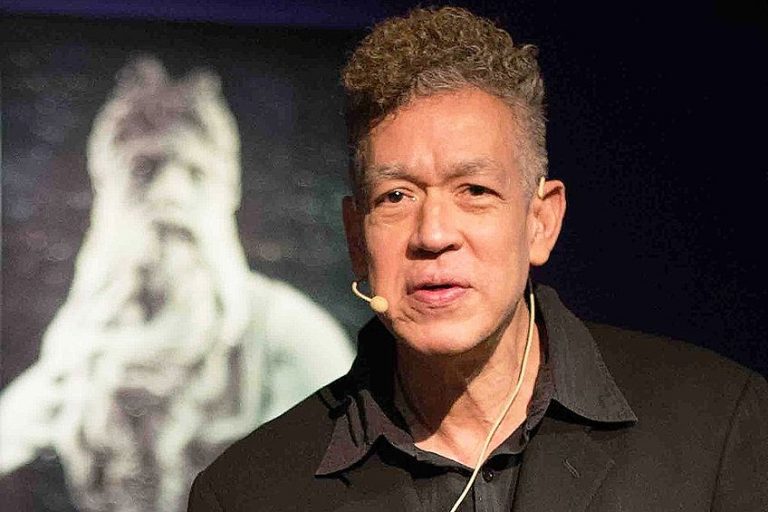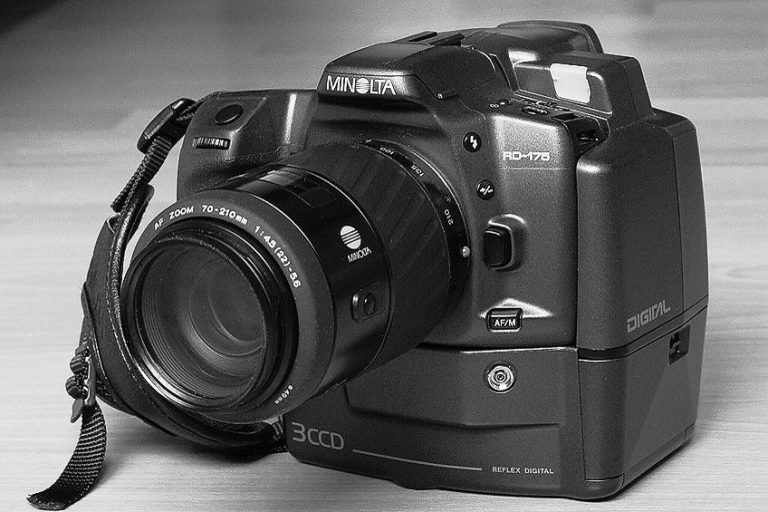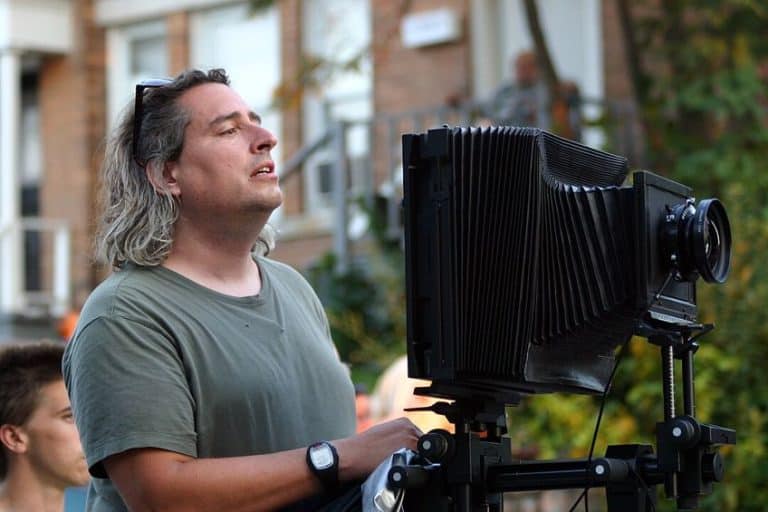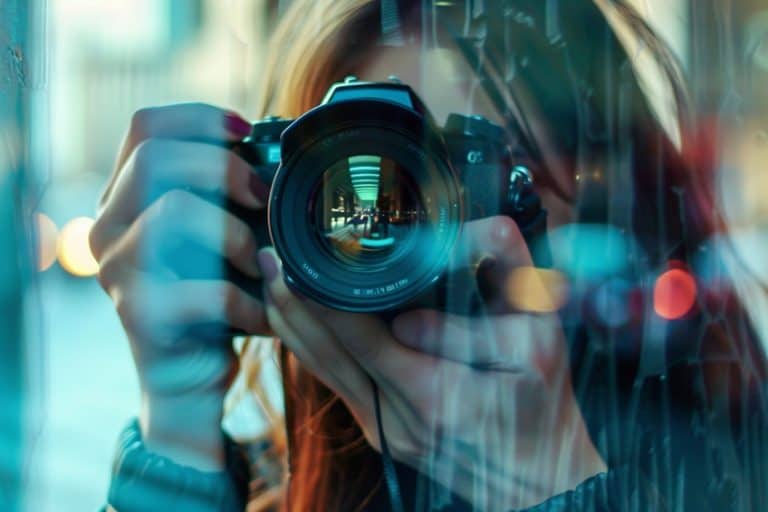Annie Leibovitz Famous Photos – What Did Annie Photograph?
Annie Leibovitz is renowned for her ability to capture politicians, celebrities, and royalty with her signature flair, possessing the ability to both celebrate and critique the celebrity culture she reflects with her photography. Annie Leibovitz’s famous photos combine fine and commercial art, influenced by documentary tradition but also at ease with theatrical staging. Working for Rolling Stones magazine, Leibovitz took photos of many famous celebrities and is renowned for her portraiture, such as the John Lennon and Yoko Ono picture. Today, we will explore her life and photography, and answer questions such as “what pursuit has made Annie Leibovitz famous?”.
Table of Contents
The Biography of Annie Leibovitz
| Name | Annie Leibovitz |
| Nationality | American |
| Date of Birth | 2 October 1949 |
| Date of Death | Present |
| Place of Birth | Waterbury, Connecticut, United States |
Annie Leibovitz is most recognized for her portraiture photography and her remarkable ability to accentuate and amplify her subjects’ features. Famous individuals from the entertainment, arts, and intellectual worlds have wanted to collaborate with the famous photographer because they like her interpretations and perspective. Annie Leibovitz was an active member of the creative and artistic communities she photographed. Implanting herself into the situation and among the individuals she shot culminated in intimate personal connections, occasionally risking her own safety and well-being.

Childhood and Education
Because Leibovitz’s father was a lieutenant colonel in the United States Air Force, the family relocated regularly throughout her youth. Her family attributes her skill as a photographer to spending her formative years looking out the window of a car at the ever-changing world around her. During the Vietnam War, the family moved to the Philippines in the late 1960s, where her father was stationed. The family was going through a difficult period, and her increasing political consciousness was divided in the midst of the controversial war. It was at this time that she started dabbling with photography, taking images around the military facility and surrounding areas. Leibovitz was not yet committed to photography, though, and she had no intentions to pursue a career as a professional photographer at that point. That all changed when Leibovitz relocated to the West Coast to study at the San Francisco Art Institute in 1967.
Leibovitz started to study painting with the aim of becoming an art teacher but found herself starting to embrace the city’s youthful and free-spirited hippie lifestyle. Leibovitz then joined a photography workshop during her next semester and soon switched her major.
Early Training
In 1970, while still studying, Leibovitz hesitantly handed Jann Wenner, the founder of Rolling Stone magazine, her photo of Allen Ginsberg, the renowned poet, smoking marijuana at an anti-Vietnam protest. Wenner saw Leibovitz’s potential right away and employed her as a contributing photographer to the magazine, and his photo was featured on the cover of Rolling Stone‘s following edition. The magazine was an experimental, innovative publication centered on the era’s counterculture and its associated rock music that evolved from the late 1950s bohemian philosophy. Rolling Stone was “an empty canvas begging to be filled with photos”, according to Leibovitz.
At the age of 23, she had become the publication’s chief photographer and was given complete creative freedom with which to explore her work. In exchange, Leibovitz created some of the magazine’s most memorable photos, showcasing some of the age’s most prominent performers, including Bob Dylan, The Rolling Stones, and Elton John. Her work with the magazine brought her in contact with some of the most well-known creative individuals of the day, including the famous photographer Richard Avedon. He was known for avoiding friendships with other photographers, but he recognized something in the young woman and the two grew close, with Avedon eventually taking on a mentorship role in her life.
Mature Period
In 1983, Vanity Fair magazine approached Annie Leibovitz for the position of the publication’s first chief photographer. The legendary rock & roll photographer took a major risk by moving to a slick, mainstream magazine, but the timing was actually perfect. Leibovitz had established a horrible drug-driven lifestyle throughout her 13-year employment at Rolling Stone magazine, overdosed twice, and was said to have peddled her photography equipment to buy cocaine. She was ready to continue her career after spending time in rehab and deciding to stay clean for good. Vanity Fair saw Leibovitz as carrying on Edward Steichen’s classic legacy of portraiture, but with a countercultural twist. The magazine also offered Leibovitz complete artistic license, and people who had previously refused to be photographed for the magazine began requesting to collaborate with Annie Leibovitz in the hopes of becoming a part of something unique. The Library of Congress deemed her a Living Legend in 2000, received the Centenary Medal and Honorary Fellowship from the Royal Photographic Society in 2009, and had twin children in 2005 with the aid of a surrogate.
Annie Leibovitz is most well-known as a portrait photographer of celebrities, yet has become as well-known as the individuals she portrays. She has pioneered the path for other modern commercial photos, such as those of Mario Testino, to be recognized as real works of art. She is a virtuoso at portraying popular culture figures in striking and unique ways. She continues to create and develop her oeuvre in both creative and popular contexts, and her photography sets a high bar for aspiring photographers to strive towards.
Annie Leibovitz’s Famous Photos
Annie Leibovitz has a unique aptitude for capturing the essence of a scene, noticing nuances that might otherwise go unnoticed, and conveying an alternate view of an event, scene, or individual. She has exhibited at global museum exhibits and won various photography honors, yet the majority of her photography is approachable and was first published in commercial environments.
Annie Leibovitz’s famous photos have a distinct cultural cachet due to their fusion of fine art and popular themes.
Mick Jagger, Buffalo, NY (1975) by Annie Leibovitz
| Date | 1975 |
| Medium | Bromide print |
| Dimensions (cm) | 35 x 26 |
| Location | National Portrait Gallery, London, United Kingdom, and Rolling Stone archive |
Following five years working at Rolling Stone magazine and establishing a name as a skilled rock photographer, Mick Jagger invited Leibovitz to be The Rolling Stones’ tour photographer for their 1975 tour. Wanting to emulate the example of Robert Frank, her idol, who accompanied and documented the Rolling Stones on their 1972 tour, she spent the following year traveling across the country photographing the band members during very raw and normally unrecorded moments. This renowned photograph depicts one of these moments and has since become a symbol of the epic journey. The black and white photograph, taken soon after one of Rolling Stones’ final concerts of the tour, depicts the singer in an elevator donning a white robe as well as a towel on his head.
The singer has a weary face as he peers straight at the camera, expressing the fatigue that accompanies the exhausting lifestyle of touring and partying every night. This image, in addition to others from the trip, has come to symbolize how the photographer approached her subjects. Leibovitz would often spend days, weeks, or even a year with the person early in her career to obtain personal and revealing photographs. “In the pursuit of the finest possible photo, one has to become an intimate part of what is going on”, she once said. Unfortunately, being part of what was happening in the rock world was a major contributing factor to her eventual drug dependence.
Yoko Ono; John Lennon (1980) by Annie Leibovitz
| Date | 1980 |
| Medium | C-type color print |
| Dimensions (cm) | 30 x 31 |
| Location | National Portrait Gallery, London, United Kingdom, and cover of Rolling Stone (1981) |
Rolling Stone magazine embraced color photography in the mid-1970s, and Leibovitz followed suit. She had previously photographed Lennon for the publication multiple times in both color and black & white, but Leibovitz’s most famous portrait of the musician was the John Lennon and Yoko Ono picture. It portrays the famous couple in a romantic embrace, with a nude John Lennon snuggled over a fully dressed Yoko Ono, pecking her on the cheek. She had originally intended to only take photos of John Lennon, but he insisted that she be included in the shoot. The photo was snapped only a few short hours before the former Beatles musician was assassinated outside his Upper West Side home by a deranged fanatic named Mark David Chapman. It was first featured on the cover of Rolling Stone and immediately became renowned for its timeliness and the way it enshrined the couple’s love for one another.
Demi Moore (1991) by Annie Leibovitz
| Date | 1991 |
| Medium | Platinum print |
| Dimensions (cm) | 112 x 91 |
| Location | Vanity Fair archive |
When actress Demi Moore was photographed for the front cover of Vanity Fair magazine Leibovitz’s staged portraits developed a reputation for being purposefully controversial. The pregnant actress stands nude against a gray background. One of her hands covers her bosom, while the other hand affectionately caresses her pregnant tummy, establishing the portrait’s focal point. Moore confidently exhibits her naked body while glancing over her shoulder. When the Cultural Wars were at their height in the 1990s, the photograph was viewed as an unexpectedly provocative move from a mainstream magazine. When the edition was issued, there was an instant uproar and outrage. A star on a magazine cover, absolutely nude and clearly pregnant, was deemed disgusting and indecent by some of the public. The photo sparked a national debate about femininity, decency, and what it meant to be a competent mother in that day and age. Some deemed Moore unsuited for parenting since she posed naked, while admirers lauded her brazen expression of the natural function of pregnancy.
Reading Recommendations
Today, we covered Annie Leibovitz’s famous photos and lifetime. However, there is much of her biography that cannot be conveyed in a single article. So, we suggest that if the topic interests you, then perhaps you should consider getting a book about Annie Leibovitz. To make your choice easy, we have compiled a list of a couple of book recommendations.
Wonderland (2021) by Annie Leibovitz and Anna Wintour
This book tells the fascinating story of famed photographer Annie Leibovitz’s experiences with fashion over the course of 50 years. Looking back on her career, she saw that fashion was always present. Fashion is important in the grand scheme of things, but photography is her first love. The most significant aspect is the photograph. And photography is so broad that it includes portraiture, journalism, photojournalism, family portraits, and fashion.
Her work for Vogue magazine inspired her passion for a type of photography she may not have pursued otherwise.
- Explores Leibovitz's career over 50 years
- Includes 350 extraordinary images
- A selection of many images previously unpublished
Annie Leibovitz (2022) by Annie Leibovitz
Annie Leibovitz, the most prominent portrait photographer still working at the moment, was fascinated by the task when Benedikt Taschen asked her to assemble her photographs in a SUMO-sized volume. Leibovitz draws on more than four decades of work, beginning with photography for Rolling Stone in the 1970s and continuing with conceptual images for Vogue and Vanity Fair. From Richard Nixon and Queen Elizabeth II to Lady Gaga and Laurie Anderson, the book covers both cultural and political history.
- Photographs available in this SUMO-size book
- Draws on more than 40 years of Leibovitz's work
- Includes portraits that have rarely been seen before

That wraps up our article on Annie Leibovitz’s famous photography and biography. As we have discovered, she is most well-known for her work with the famous rock publication Rolling Stone, where she took the cover photos of famous celebrities and stars such as the Rolling Stones, as well as the iconic John Lennon and Yoko Ono pictures. Her legacy continues to live on, inspiring a new generation of photographers.
Frequently Asked Questions
What Pursuit Has Made Annie Leibovitz Famous?
Leibovitz is known for her work producing covers for magazines such as Vogue, Vanity Fair, and Rolling Stone. She is most renowned for her portraiture photography. She has taken photos of stars, royalty, and celebrities, in addition to fashion photography.
What Were Annie Leibovitz’s Beliefs When It Came to Photographing Her Subjects?
Leibovitz believed that one cannot be an outsider if one wishes to depict a scene or person. She asserted that a photographer should spend a considerable amount of time getting to know the individual they would be portraying. She felt it was necessary to fully integrate herself into the person’s lifestyle.
Jordan Anthony is a film photographer, curator, and arts writer based in Cape Town, South Africa. Anthony schooled in Durban and graduated from the University of the Witwatersrand, Johannesburg, with a Bachelor of Art in Fine Arts. During her studies, she explored additional electives in archaeology and psychology, while focusing on themes such as healing, identity, dreams, and intuitive creation in her Contemporary art practice. She has since worked and collaborated with various professionals in the local art industry, including the KZNSA Gallery in Durban (with Strauss & Co.), Turbine Art Fair (via overheard in the gallery), and the Wits Art Museum.
Anthony’s interests include subjects and themes related to philosophy, memory, and esotericism. Her personal photography archive traces her exploration of film through abstract manipulations of color, portraiture, candid photography, and urban landscapes. Her favorite art movements include Surrealism and Fluxus, as well as art produced by ancient civilizations. Anthony’s earliest encounters with art began in childhood with a book on Salvador Dalí and imagery from old recipe books, medical books, and religious literature. She also enjoys the allure of found objects, brown noise, and constellations.
Learn more about Jordan Anthony and the Art in Context Team.
Cite this Article
Jordan, Anthony, “Annie Leibovitz Famous Photos – What Did Annie Photograph?.” Art in Context. June 9, 2023. URL: https://artincontext.org/annie-leibovitz-famous-photos/
Anthony, J. (2023, 9 June). Annie Leibovitz Famous Photos – What Did Annie Photograph?. Art in Context. https://artincontext.org/annie-leibovitz-famous-photos/
Anthony, Jordan. “Annie Leibovitz Famous Photos – What Did Annie Photograph?.” Art in Context, June 9, 2023. https://artincontext.org/annie-leibovitz-famous-photos/.











